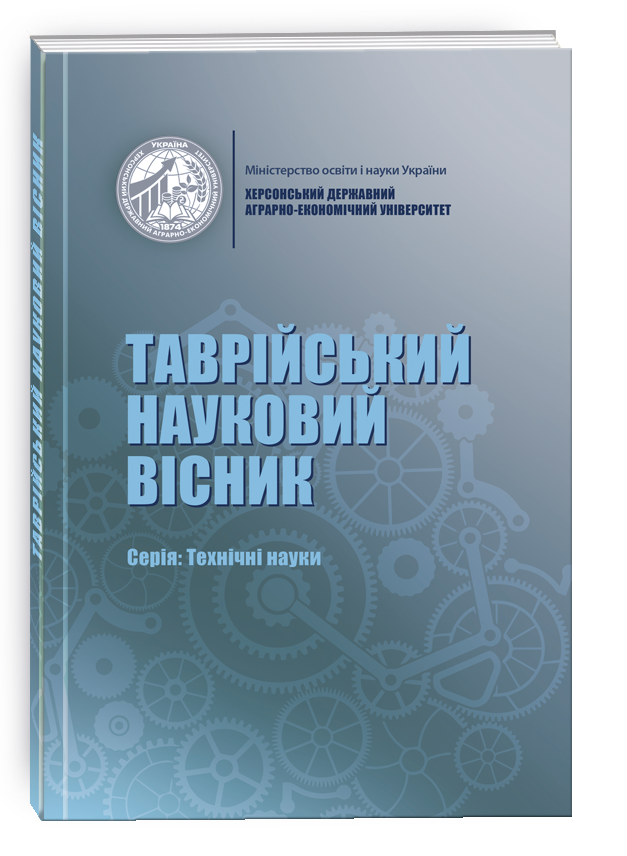EXAMINATION OF MEAT AND VEGETABLE RAW MATERIALS IN THE PRODUCTION OF CANNED MEAT AND VEGETABLES
DOI:
https://doi.org/10.32851/tnv-tech.2021.2.5Keywords:
canned meat, dangerous biological factors, microbiological indicators, technological schemeAbstract
The article is devoted to the study of raw materials used for the production of canned meat and vegetables, in order to determine microbiological safety and identify hazardous factors of biological origin during the technological process of production. A review of the literature shows that scientists - technologists are constantly improving and offering new recipes for this type of product, adding to the main raw materials (meat, offal) plant components that have functional properties. But the main problem in the production of safe canned meat and vegetables is the quality of basic and auxiliary raw materials. During the veterinary and sanitary examination of products of slaughter of animals and poultry, meat that is classified as conditionally suitable according to the rules is sent for industrial processing, and this is the production of cooked sausages, meat loaves, canned food. Food technologists face the task of producing a high-quality and safe product from low-quality raw materials that would satisfy a person’s daily need for macro and micronutrients. The development of a technological scheme and the study of hazards in the production of canned meat and vegetables has made it possible to identify critical points during certain stages, which will reduce biological risks as a result of control. The microbiological parameters of the main raw material meet the regulatory requirements, but defrosted meat should be used immediately after thawing to prevent excessive development of the microflora.
References
Кучеренко Л.О., Аннєнкова Н.Б. Огляд асортименту м’ясних та м’ясо-овочевих консервів для дитячого харчування на ринку України. «Наукові здобутки молоді – вирішенню проблем харчування людства у ХХІ столітті» : матеріали 82 міжнародної наукової конференції молодих учених, аспірантів і студентів, 13–14 квітня 2016 р. Київ: НУХТ, 2016. Ч. 1. С. 103.
Запталов Б.Й., Карпуленко М.С., Муковоз В.М., Якубчак О.М., Хомутенко В.І., Ігнатовська М.В. Ветеринарно-санітарна експертиза консервів м’ясних з яловичини, вироблених в Україні. Науково-технічний бюлетень НДЦ біобезпеки та екологічного контролю ресурсів АПК Т.4.No3,2016 С. 74–78.
Морозов А.И. Выращивание вешенки Москва : ООО Издательство ACT; Донецк : Сталкер, 2003. 46 с.
Пасічний В.М., Жабіна О.Б., Ястреба Ю.А. Перспективи використання грибів у виробництві м’ясних та м’ясо-рослиннях консервів. М’ясний бізнес. 2009. № 11 (84). С. 32–33.
Стеценко Н.О., Сімахіна Г.О. Розроблення рецептури м’ясо-рослинних консервів з покращеним вітамінно-мінеральним складом для харчування військовослужбовців International Scientific Journal Acta Universitatis Pontica Euxinus. Special edition. Дніпро-Варна, 2017. Т. 1. С. 162–167.
Баль-Прилипко Л., Крижова Ю., Морозюк Р. Рецептурні компоненти паштетних консервів профілактичного призначення. Продовольча індустрія АПК. 2016. № 1-2. С. 33–36.
Ніколаєнко М. Ідентифікація потенційно небезпечних чинників при виробництві м’ясних консервів в умовах ТОВ «Пирятинський делікатес» Науковці – переробникам. 2017. № 5. С. 6–11.
Додаток 2 до Мікробіологічних критеріїв для встановлення показників безпечності харчових продуктів. URL: https://zakon.rada.gov.ua/laws/show/z1321-12#Text.







